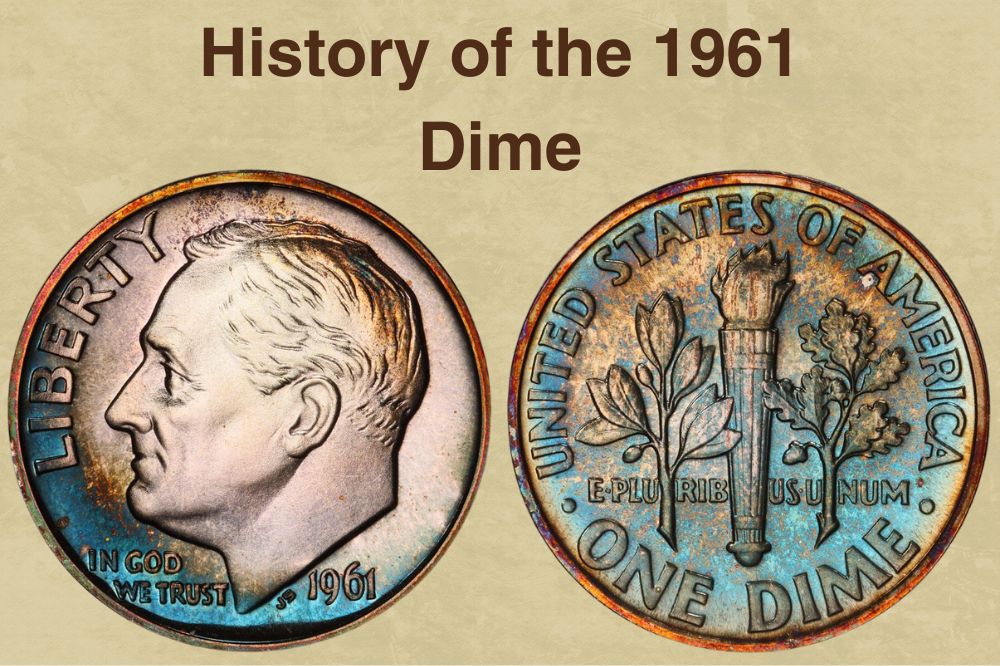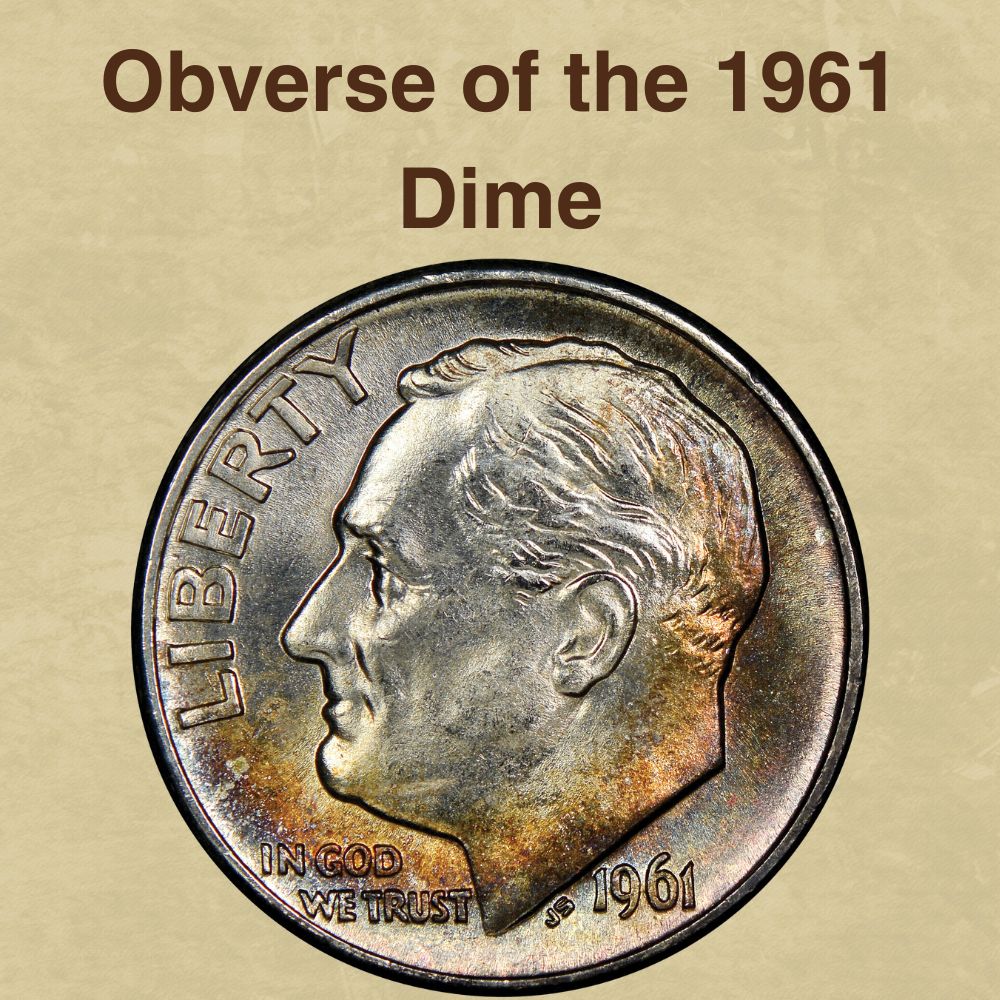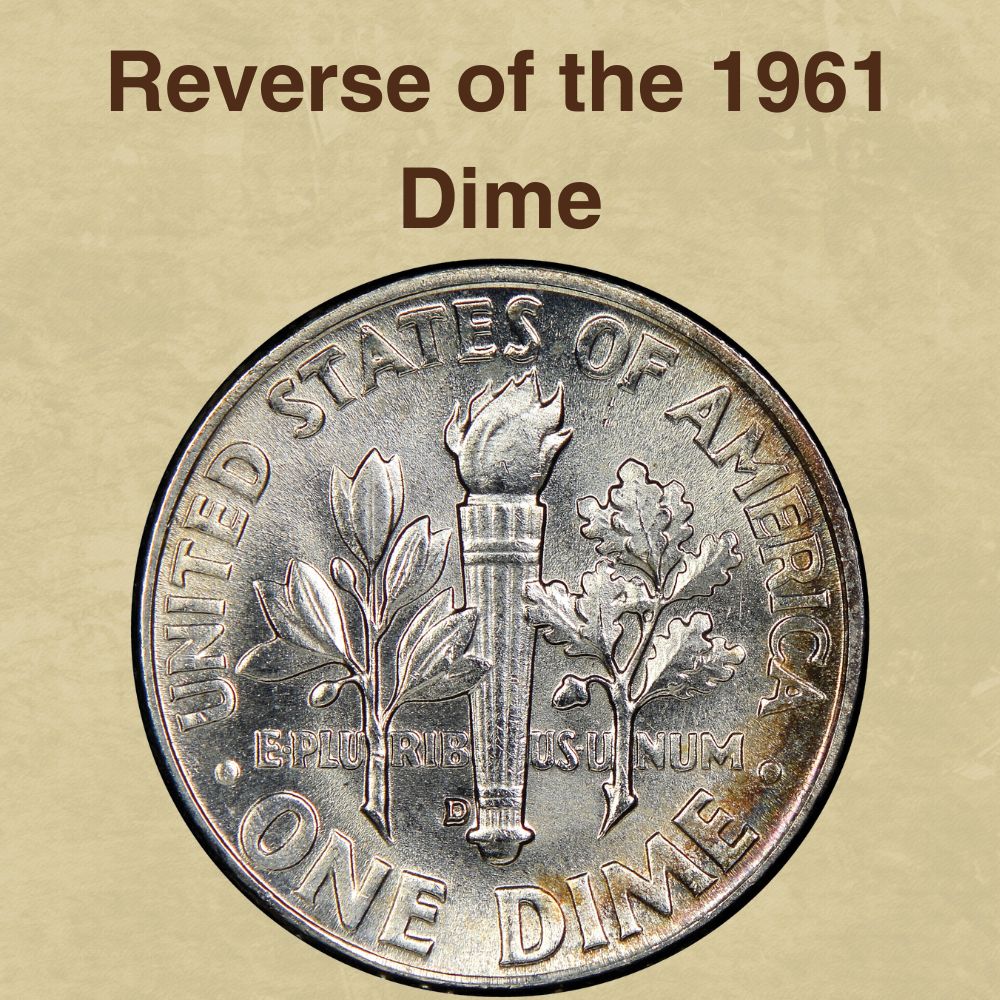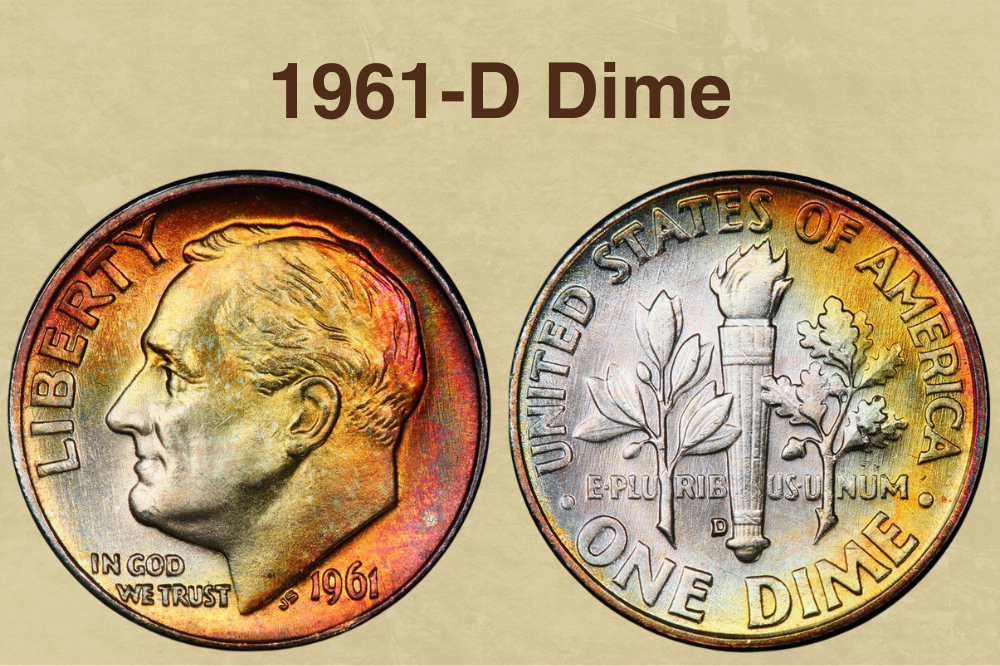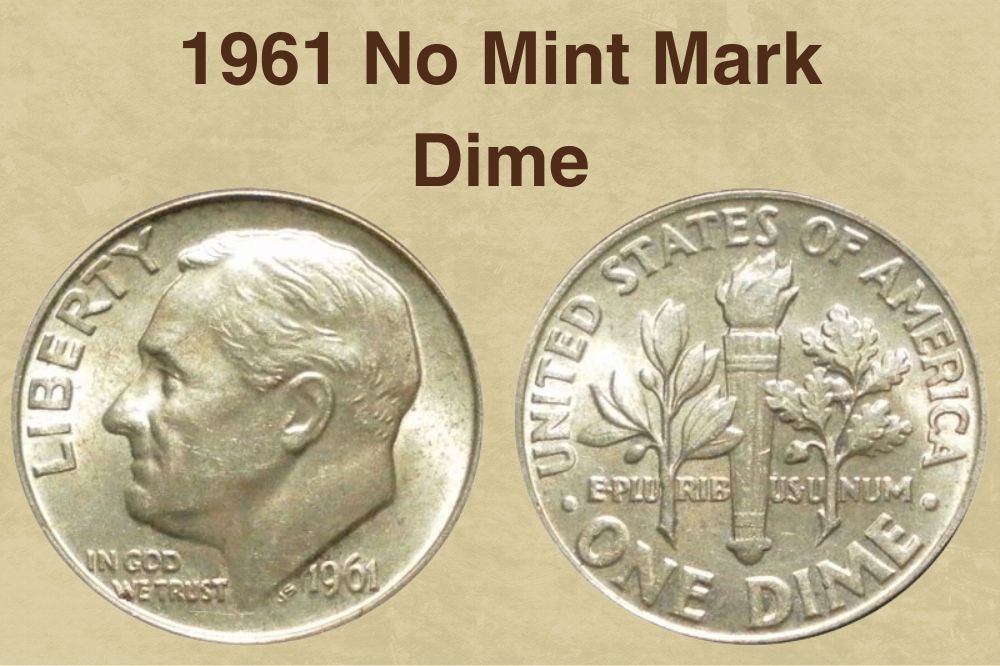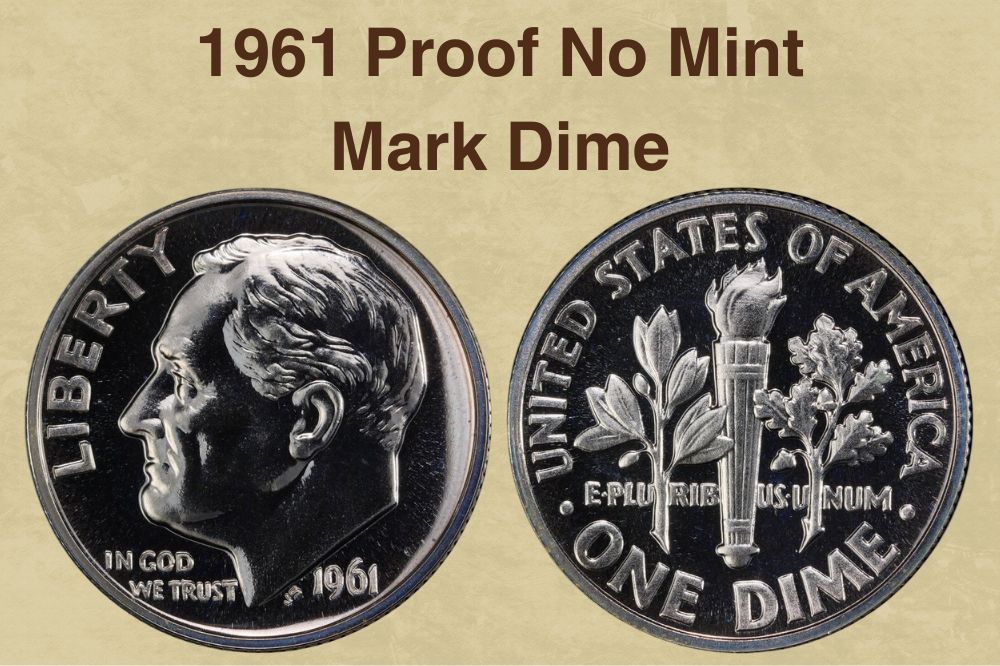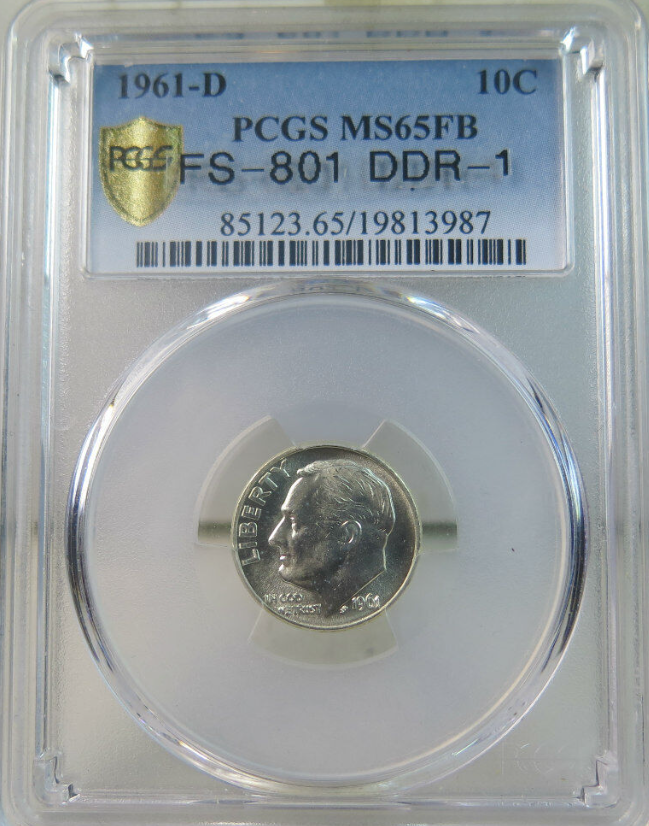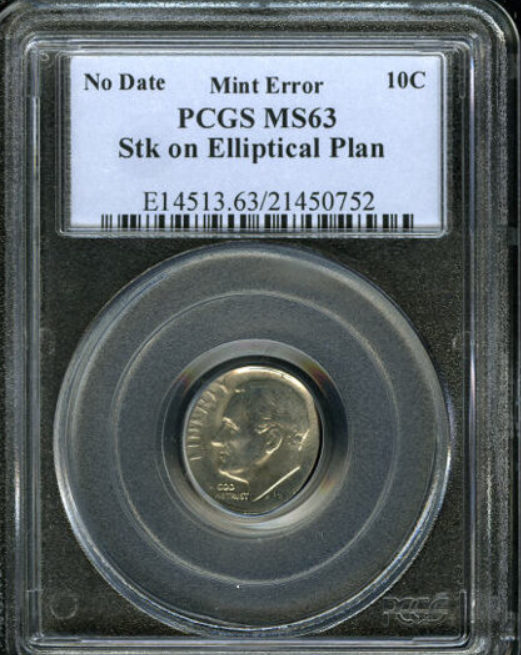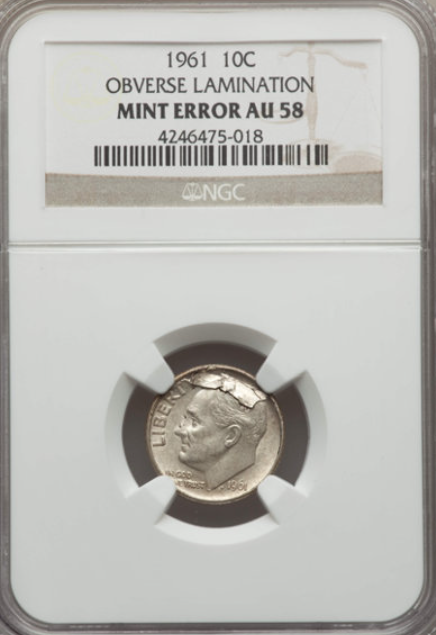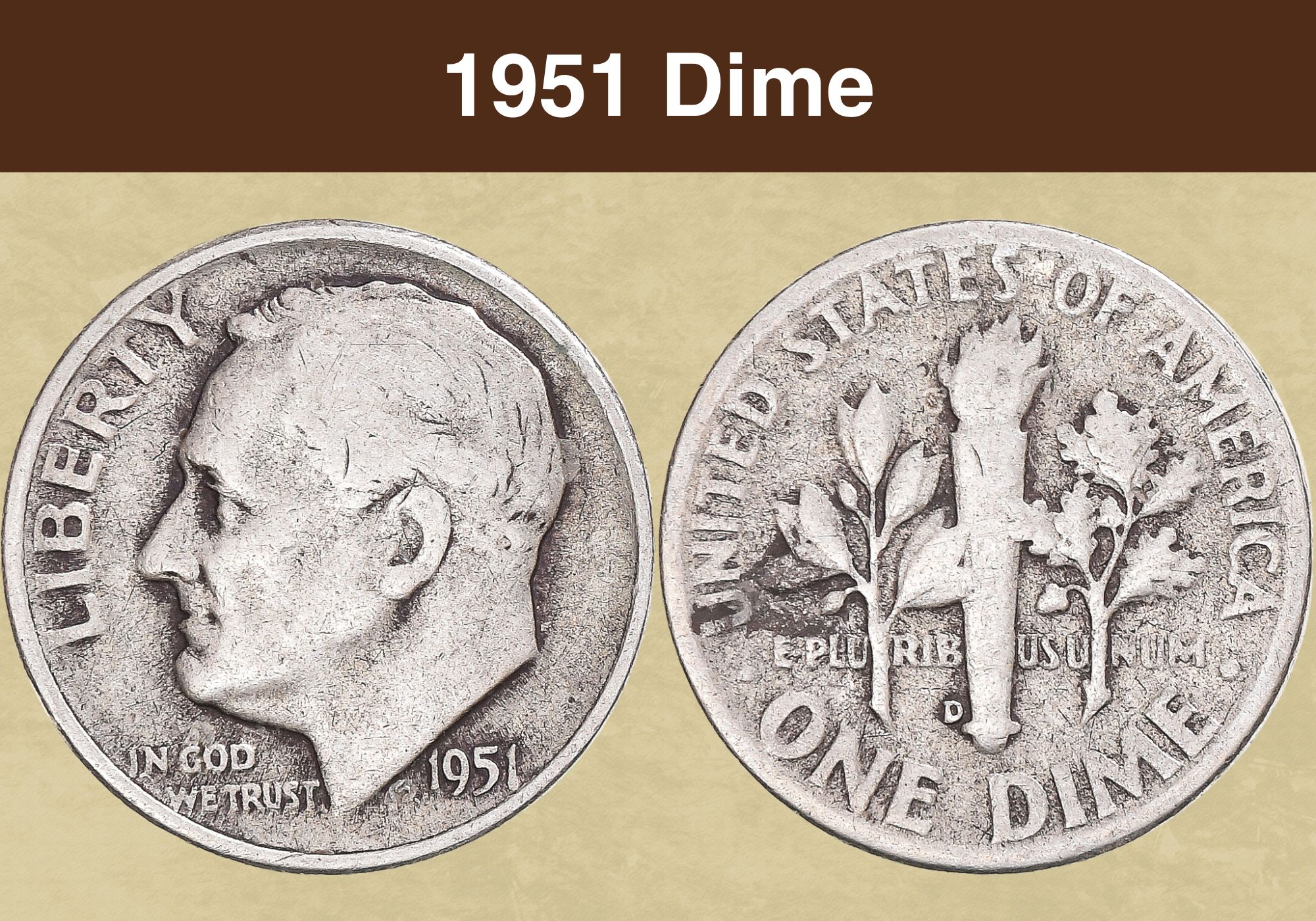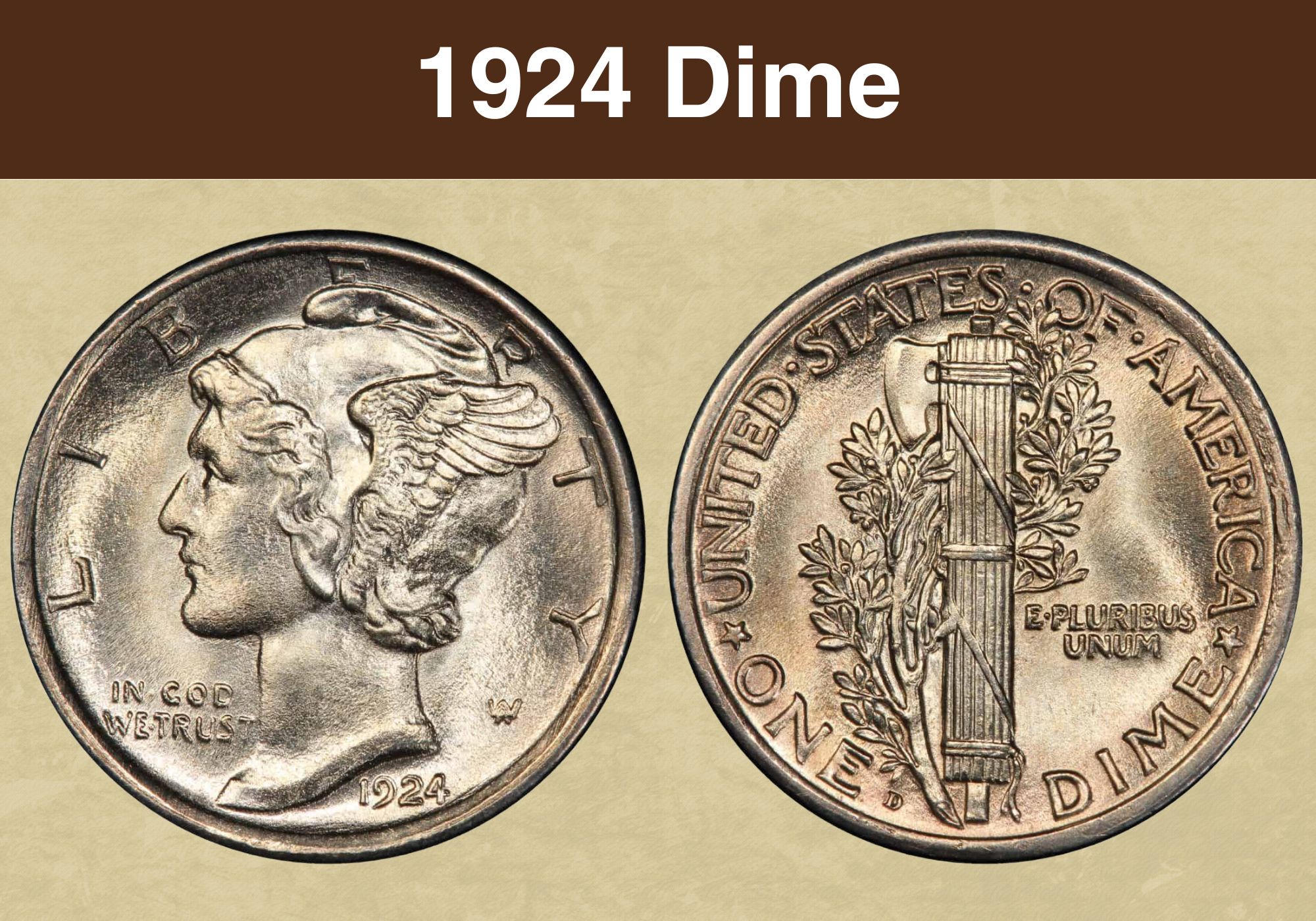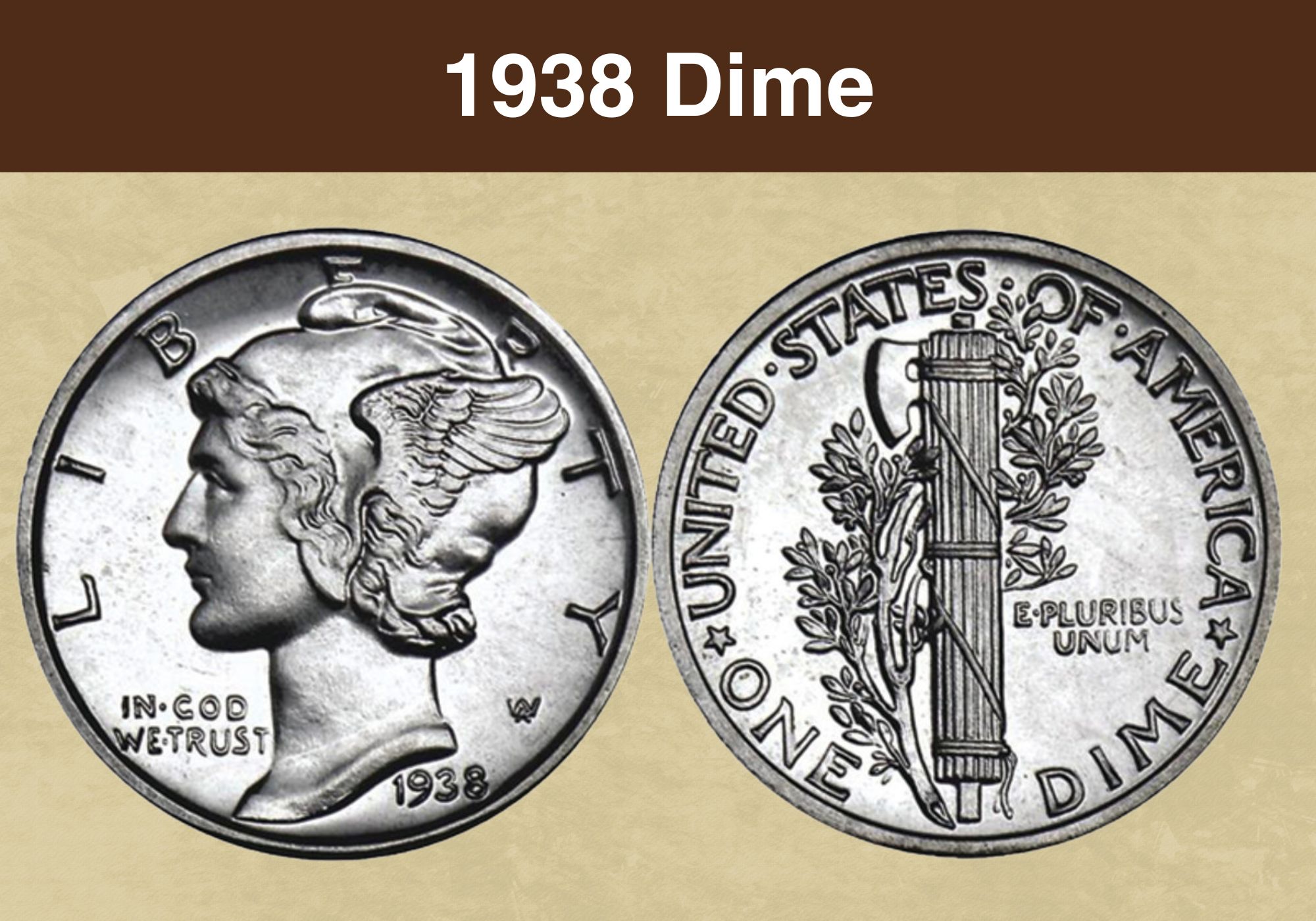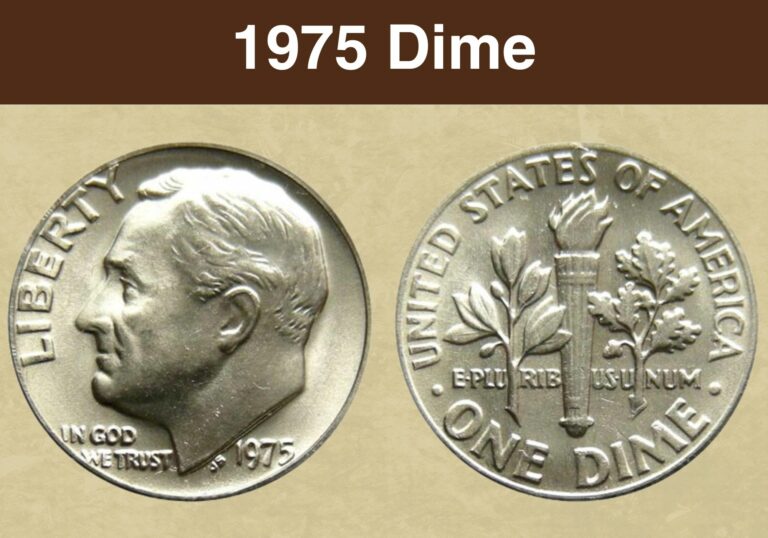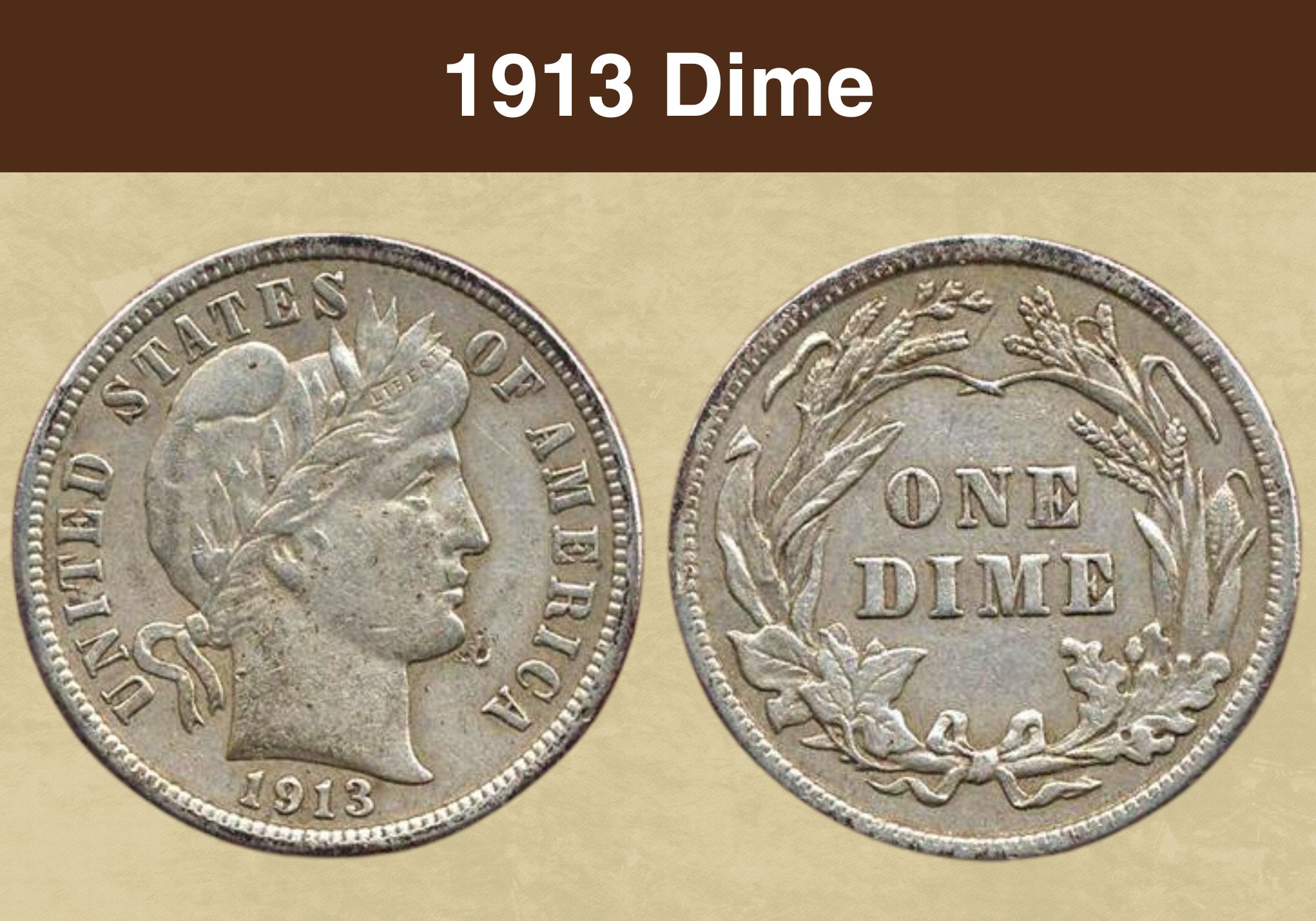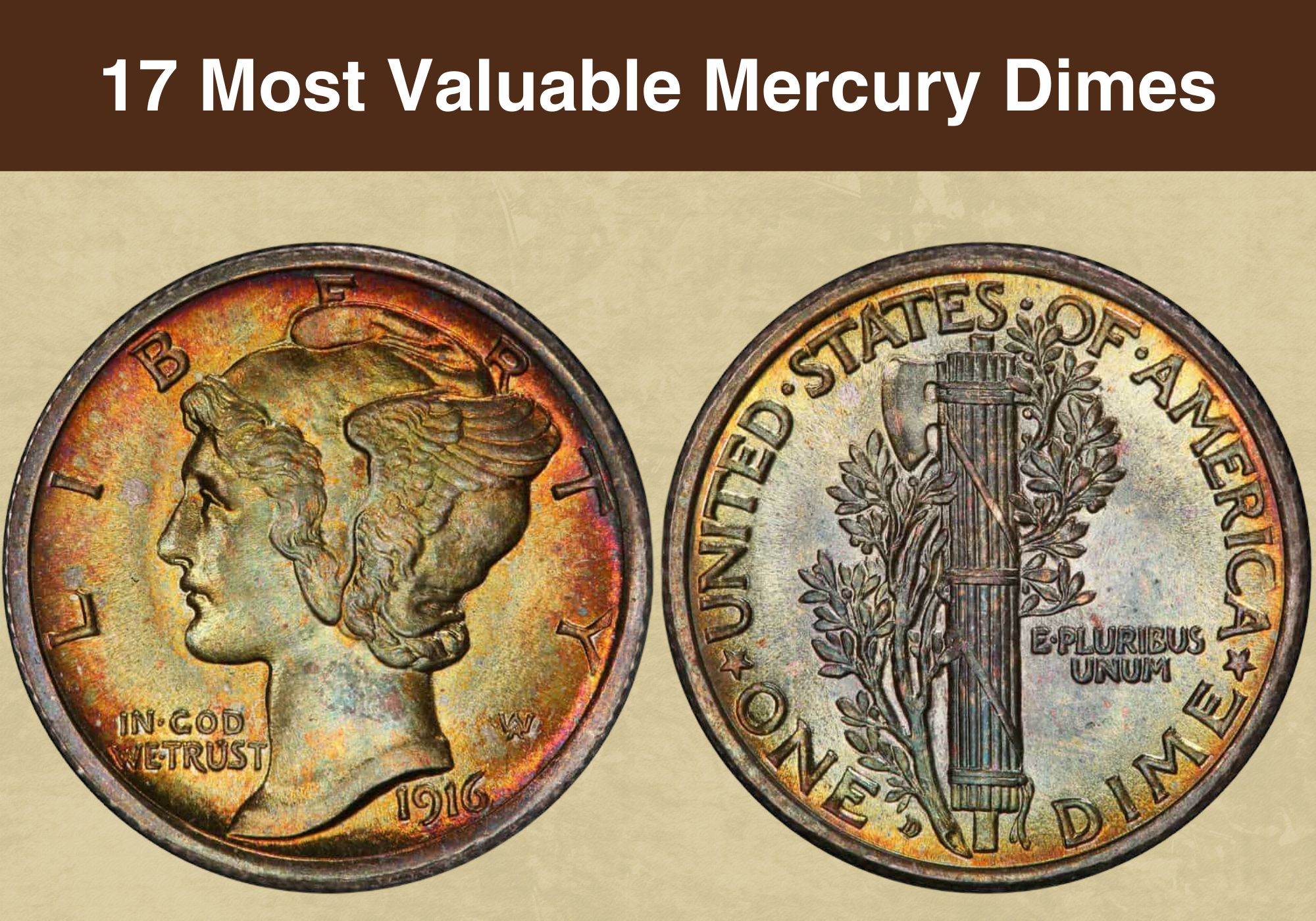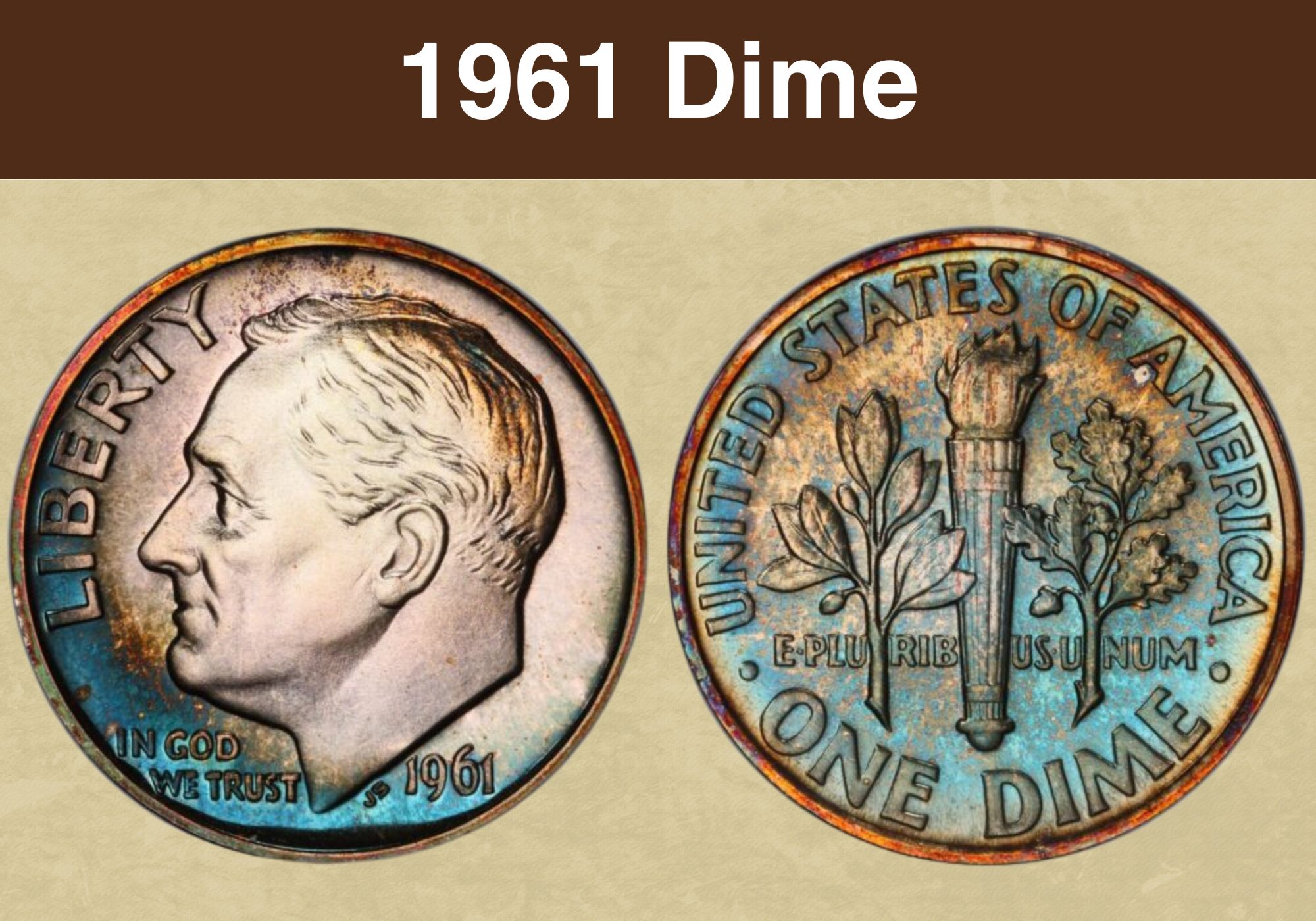
Coin Value Contents Table
- 1961 Dime Value Charts (Business Strike)
- 1961 Dime Value Charts (Proof Coins)
- History of the 1961 Dime
- Features of the 1961 Dime
- 1961 Dime Grading Guides
- 1961 Dime Value Guides
- 1961-D Dime Value
- 1961 No Mint Mark Dime Value
- 1961 Proof No Mint Mark Dime Value
- Rare 1961 Dime Errors List
- Where to Sell Your 1961 Roosevelt Dime ?
- 1961 Dime FAQ
Today, people collect silver coins as ‘junk bullion’ because of their precious metal content can still be evaluated at market rates. But in the numismatic world, the 1961 Dime is relevant as one of the last Silver Dimes ever produced. It was a highly hoarded coin since this was the start of the 1960s coin shortage, so let’s review the 1961 Dime Value and other crucial factors.
1961 Dime Value Charts (Business Strike) |
||||||
| Coin | MS 65 | MS 66 | MS 66+ | MS 67 | MS 67+ | MS 68 |
| 1961-D Dime | $18 | $22 | $38 | $150 | $225 | – |
| 1961-D Dime Full Bands | $28 | $55 | $90 | $475 | $1,350 | $10,000 |
| 1961 No Mint Mark Dime | $18 | $20 | $26 | $75 | $350 | – |
| 1961 No Mint Mark Dime Full Bands | $20 | $135 | $325 | $950 | $4,000 | – |
1961 Dime Value Charts (Proof Coins) |
|||||||
| Coin | PR 60 | PR 62 | PR 64 | PR 66 | PR 68 | PR 69 | PR 70 |
| 1961 Proof No Mint Mark Dime | $4 | $6 | $10 | $12 | $18 | $38 | $300 |
| 1961 Proof No Mint Mark Dime Cameo | $6 | $8 | $14 | $18 | $26 | $90 | – |
| 1961 Proof No Mint Mark Dime Deep Cameo | $7 | $10 | $15 | $30 | $160 | $360 | $5,750 |
History of the 1961 Dime
At 17.91mm in diameter and 1.35mm thick, Dimes are the smallest and thinnest US coins in circulation. Before them, the 3c coin used from 1851 to 1873 was 14mm across and 0.6mm thick. Initially, this was because they were 90% Silver and 10% Copper, so they minimized the size of these two coins to keep their melt value (molten silver) well below their face value.
But the Silver 3c was phased out soon after the Nickel (5c) showed up. And since the US Mint changed to cupronickel in 1965, Dimes are the only small denomination that’s still profitable for the mint. At least in terms of seignorage. Seignorage is the gap between the production cost and the face value of a coin. It’s the main way that the US Mint and the BEP make money.
The government also earns revenue from commemorative cash because it’s sold at premiums higher than its face value. In 2023, it costs around 3c to make a penny and 11c to make a nickel. But it only costs 5c to make a dime. After the Half Dime switched from silver to 75:25 cupronickel in 1866, Dimes became the lowest circulating denomination of US silver coins.
Introducing Cupronickel to the Dime
This 75:25 copper-nickel formula was introduced to 3c coins in 1865 and 5c (Nickels) in 1866. It was a strong, long-lasting, non-tarnishing alloy that effectively mimicked silver while keeping costs low. But the Dime retained its silver status until the coin shortage of the 1960s, prompted by silver scarcity shooting up prices. The US Mint responded as expected.
In the past, when metal got too expensive, they shrunk coin sizes or changed their metal mix. This time, they opted for the Johnson Sandwich, named after the 36th US President, Lyndon Johnson. The sandwich plated cupronickel over a copper core. 1961 was an important year for the Dime because it was the last half-decade of silver. It also had a popular mint error, DDR.
This means doubled-die reverse, also known as reverse hub doubling. We’ll discuss it later in the Error Section, but it does raise the resale value of 1961 Dimes considerably. These coins also fetch a premium because, in addition to their historical significance, they have intrinsic value due to their precious metal content. Plus, they’re technically commemoratives for FDR.
Also read: Top 17 Most Valuable Roosevelt Dimes Worth Money
The Importance of the Roosevelt Dime
You’ll note that the 1961 Dime is an FDR, introduced in 1946 to honor his death one year earlier. Franklin Delano Roosevelt contracted polio in 1921 and spent most of his presidency in a wheelchair. But he hid this fact and did his job so well that he’s the only president in US history who served four terms. In 1927, he started the Georgia Warm Springs Foundation.
This later became The National Foundation for Infantile Paralysis in 1938, then the March of Dimes in 1976, formalized in 2007. But this nickname was coined – pun intended – back in 1938 by radio personality Eddie Cantor. While people were donating a dime to FDR’s polio initiative, Cantor played on the March of Time, renaming the fundraiser the March of Dimes.
At first, cinema halls ran ads and campaigns to promote the cause. But when FDR died, the foundation faced the risk of irrelevance. Placing FDR on the Dime helped keep his name top of mind and permanently linked him to the cause. It was released posthumously on his 64th birthday. That week was the 8th anniversary of the March of Dimes run by Basil O’Connor.
Features of the 1961 Dime
Let’s talk jargon. In numismatics (the study, collection, and trade of coins, tokens, medals, paper money, etc.), the front or heads side of a coin is called its obverse, the tails side is its reverse, and the thin side is its edge. The raised border is called the rim or retaining collar.
The words stamped on a coin are called legends or mottos while the images or portraits are known as devices. The background of the coin is called the field. Coins are struck on blank discs called planchets. Some coins have edge ridges called reeds to prevent counterfeiting.
The Obverse of the 1961 Dime
It shows FDR facing left with the legend Liberty along the rim in front of his forehead. The motto In God We Trust is in front of his neck. Behind his neck is JS for official coin designer, John Sinnock, the 8th Chief Mint Engraver. This signature is followed by the mint date, 1961.
The Reverse of the 1961 Dime
It showed an olive branch, freedom torch, and oak sprig placed from left to right. The motto E Pluribus Unum runs between the three. The top of the coin says United States of America and the bottom says One Dime. The mint mark sits on the lower left of the freedom torch.
Other Features of the 1961 Dime
As we said, the 1961 Dime was 17.91mm across, 1.35mm wide, 90% Silver and 10% Copper. It had 118 edge reeds and weighed 2.5g. Although attributed to John Sinnock (who was accused of plagiarism later), he was sick so most of the work was done by his assistant Gilroy Roberts.
Also read: Top 17 Most Valuable Mercury Dimes Worth Money
1961 Dime Grading Guides
As we mentioned above, FDR Dimes are graded as FT or FB in addition to their Sheldon rating from 1 to 70. The FT qualifier comes from NGC (Numismatic Guaranty Corporation), which describes proof coins as PF and Deep Cameos as Ultra Cameo. PCGS equivalents are PR, DCAM, and FB. Coins graded by PCGS often fetch better prices within the resale space.
| # | Grade |
|---|---|
| 1 | Basal State-1 |
| 2 | Fair |
| 3 | Very Fair |
| 4, 5, 6 | Good |
| 7, 8, 10 | Very Good |
| 12, 15 | Fine |
| 20, 30 | Very Fine |
| 40 | Extremely Fine |
| 50 | About Uncirculated |
| 60 | Mint State |
| 65 | Mint State |
| 70 | Mint State |
Please check our grading guides to know your coin scale, It’s the necessary step to know the exact value of your coin.
Check out now: How to Grade Roosevelt Dime?
1961 Dime Value Guides
In 1961, Roosevelt Dimes were minted in Denver and Philadelphia. The circulating coins for everyday use were called business strikes or regular strikes while the collectible coins were called proofs and used special dies. More on that later. Also, FDR dimes have an extra term called FB for Full Bands or FT for Full Torch. It defines the clarity of the straps on the torch.
1961-D Dime Value
The Denver Mint made 209,146,550 Dimes in 1961, all with the D Mint Mark. An MS 68 sold for $1,610 in September 2009. It was graded by NGC, and they also sold two MS 68+ Dimes for $1,456 in October 2021 and $780 in November 2022. But the highest grade verified by PCGS is MS 67+. They’ve seen nine of them and estimate them at $225 in October 2023.
PCGS has also seen over seventy MS 67s which it values at $150 and over 750 MS 66s at $22 since availability directly influences the price. As for FB coins, an MS 67+ FB sold for $5,288 in November 2012. PCGS has graded eight so it places their value at $1,350 in October 2023. The highest coin they’ve graded is an MS 68 FB. It’s the only one so it’s worth $10,000 today.
1961 No Mint Mark Dime Value
In 1961, the Philadelphia Mint made both circulating coins and proofs, though none of them had mint marks. 93,730,000 of them were business strikes. And an eBay merchant sold an MS 67 for $550 in February 2022. It’s now worth $75 since over 68 have reached PCGS. But there are only two MS 67+ Dimes so they’re worth $350 in October 2023. What about FBs?
An MS 67+ FB sold for $3,400 in May 2020. Only three have been submitted to PCGS so the going price is $4,000 in October 2023. We know of one MS 68 FB but no public sales records are available. Meanwhile, an MS 67 FB sells for $950 in October 2023 and 11 are known. A step down, MS 66 FBs plunge to $135 because almost a hundred samples have been graded.
1961 Proof No Mint Mark Dime Value
In 1961, proof coins were being made in Philadelphia because the San Francisco Mint was closed in 1955. They made mirror-like proofs, which meant they had a mirrored field and a frosted device. Proof dies were pickled in acid to get the frosted effect and scrubbed with horsehair brushes to make them shiny. Blanks were tumbled with 6mm stainless steel beads.
These burnished blanks gave proof coins their characteristic shine, but the hazy effect on the device diminished slightly every time the die struck a planchet. So over time, the contrast between the device and the field faded. The first 50 to 100 coins with the strongest contrast were graded as Deep Cameo or Ultra Cameo, followed by Cameo coins for the next 50 to 100.
Newer proof coins (1971 onward) use digitized lasers for the frosting, and this doesn’t fade so most modern proof coins are DCAMs. Back to 1961, the Philadelphia Mint made 3,028,244 Proof Dimes without mint marks. A PR 65 sold for $396 on eBay in 2014 while a PR 69 CAM was $213 and a PR 70 DCAM was $5,581 the same year. It’s worth $5,750 in October 2023.
Also read: 13 Most Valuable Dime Errors Worth Money
Rare 1961 Dime Errors List
Since the stamping press can produce hundreds of coins per minute, mint mistakes can’t be avoided. And they can raise the price of a coin significantly. Errors spotted within the first 30 days of a coin’s release are called FS or first-strike errors and are the most expensive. Among 1961 Dime Errors, the FS-801 DDR is quite well known. Let’s discover more 1961 coin flaws.
1961-D Dime DDR
Earlier, we described DDR aka hub doubling or doubled-die reverse. It’s when the die shifts between hub strikes, causing the second strike to hit a slightly different spot and creating a double-vision effect. This is copied to every coin made by that die so it becomes a variety. An MS 65 DDR was $125 on eBay in August 2019 and an MS 66 is worth $275 in October 2023.
1961 (P) Dime Struck on an Elliptical Planchet
Coiled metal sheets are brought to the mint where they’re flattened in a blanking machine and punched into discs of the right size. But sometimes, the planchets aren’t perfectly round. And when a coin is struck on a misshapen planchet e.g. elliptical blanks, that flaw can add some resale value to the dime. In MS 66 FT, this NGC-graded 1961 Dime sold for over $260.
1961-D Dime Curved Clip Error
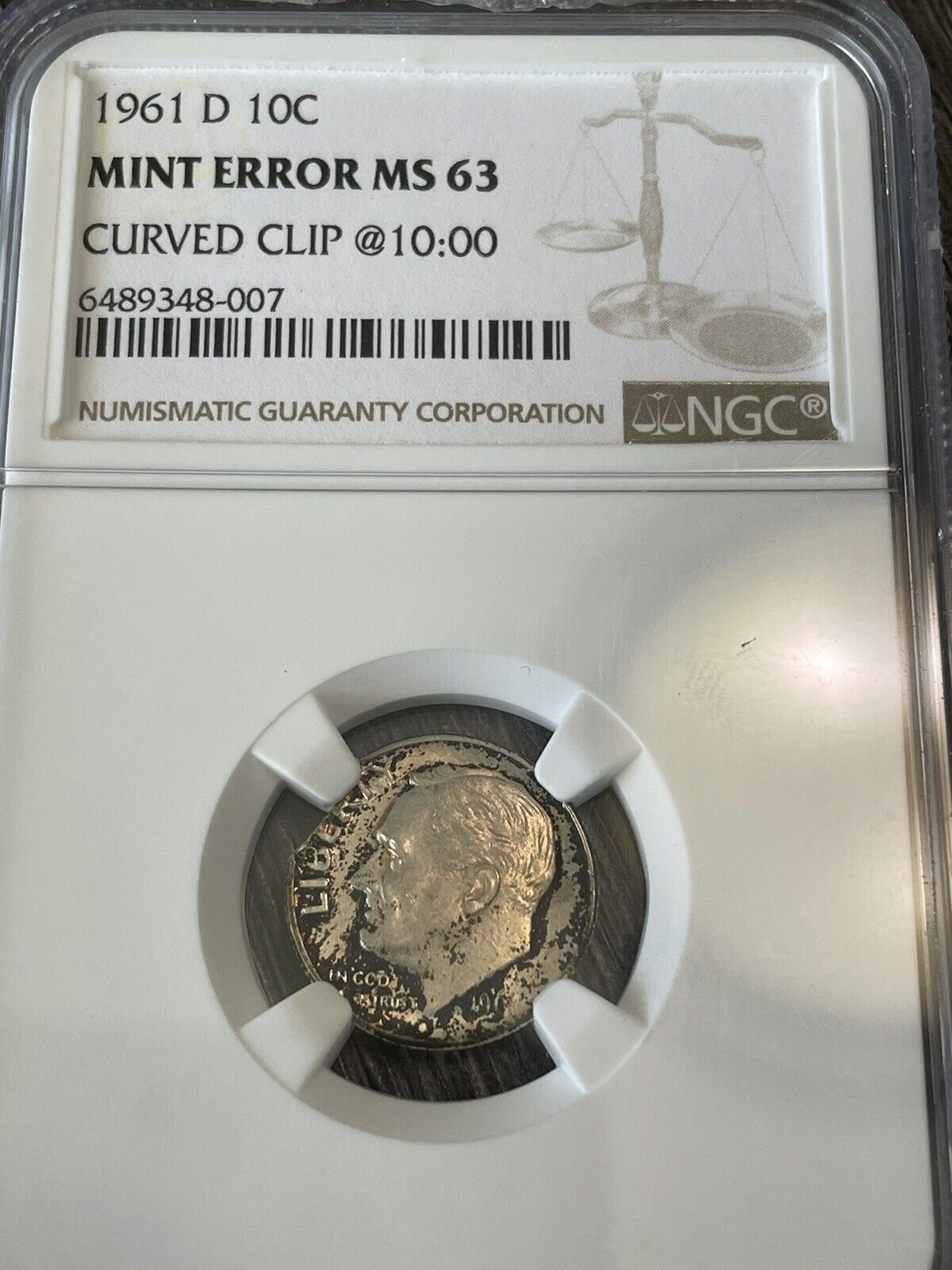
When planchet sheets are punched into discs, the leftover metal is full of holes so it gets sent for recycling. But sometimes, coins are accidentally struck on these perforated sheets. If the coin is struck near the edge of the sheet, it may have a straight clip. And if it’s near a hole, it might have a curved clip. Graded MS 64, this one has the latter mint mistake. It sold for $20.
1961 (P) Dime Lamination Error
A lamination is when the planchet is defective so it gets damaged when the die hits it. The force of the die might peel off some metal alloy layers, revealing the copper levels below. Or it can crumple the top surface without shearing off the silver sheen. It can poke a blow hole in the coin, or remove the clad layer entirely. This silver AU 58 lamination sold for about $32.
Where to Sell Your 1961 Roosevelt Dime ?
Now that you know the value of your coins, do you know where to sell those coins online easily? Don’t worry, I’ve compiled a list of these sites, including their introduction, pros, and cons.
Check out now: Best Places To Sell Coins Online (Pros & Cons)
1961 Dime FAQ
Is a 1961 Dime Worth Anything?
In October 2023, a 1961 (P) Dime graded MS 67+ is $350 while an MS 67+ FB is $4,000. For Denver coins, a 1961-D Dime graded MS 67+ is $225 and an MS 67+ FB is $1,350. 1961 Proof Dimes are still quite valuable though. Currently, a 1961 (P) Proof Dime in DCAM is $5,750.

